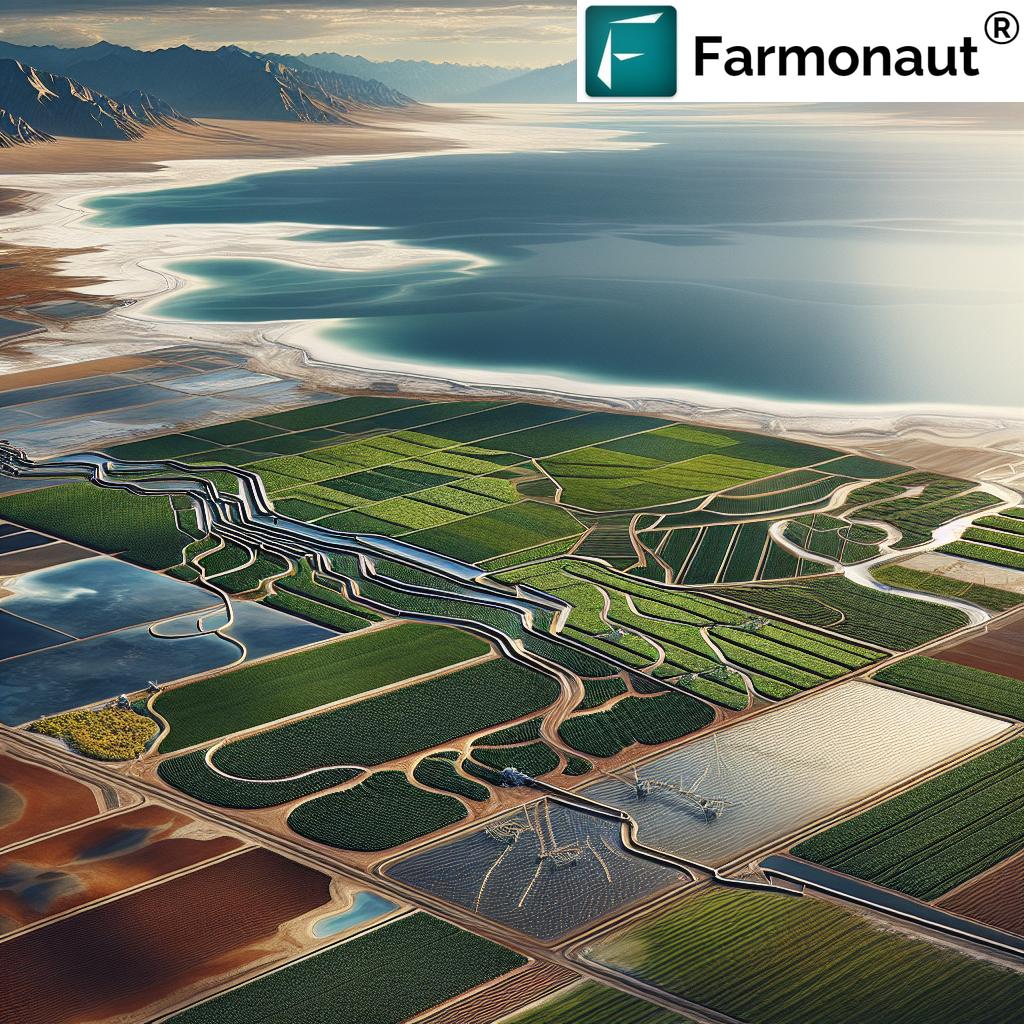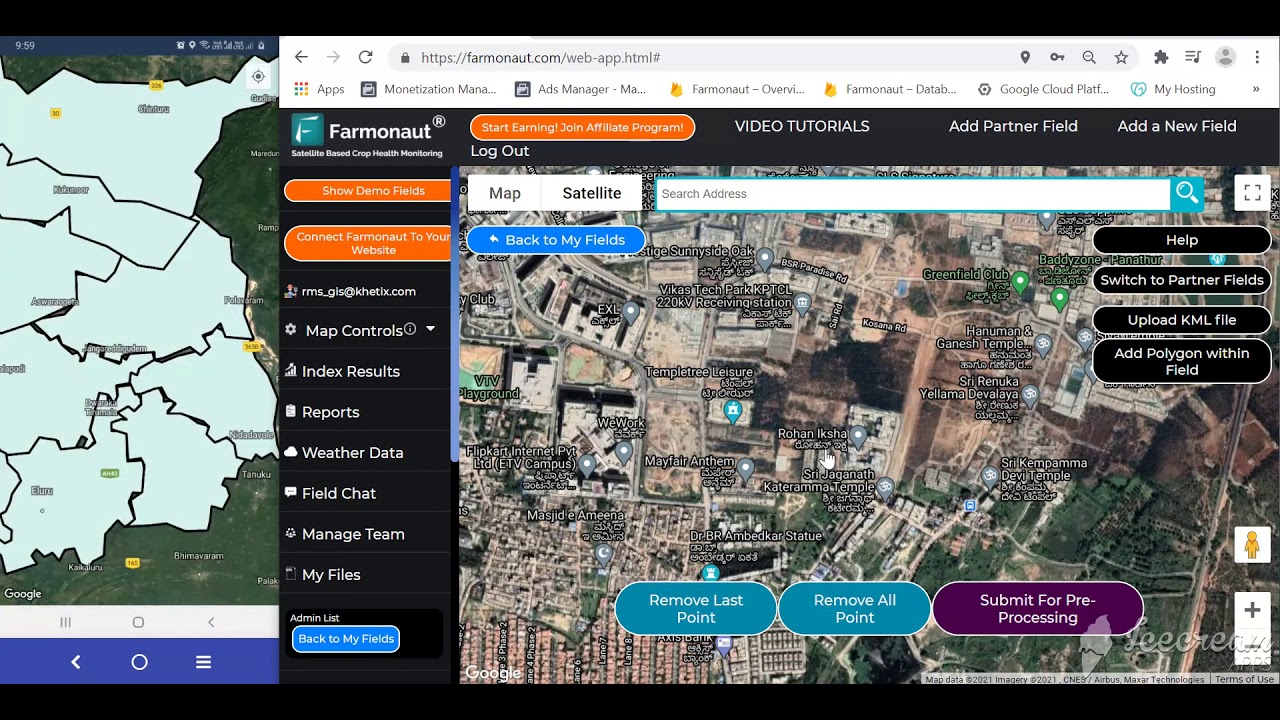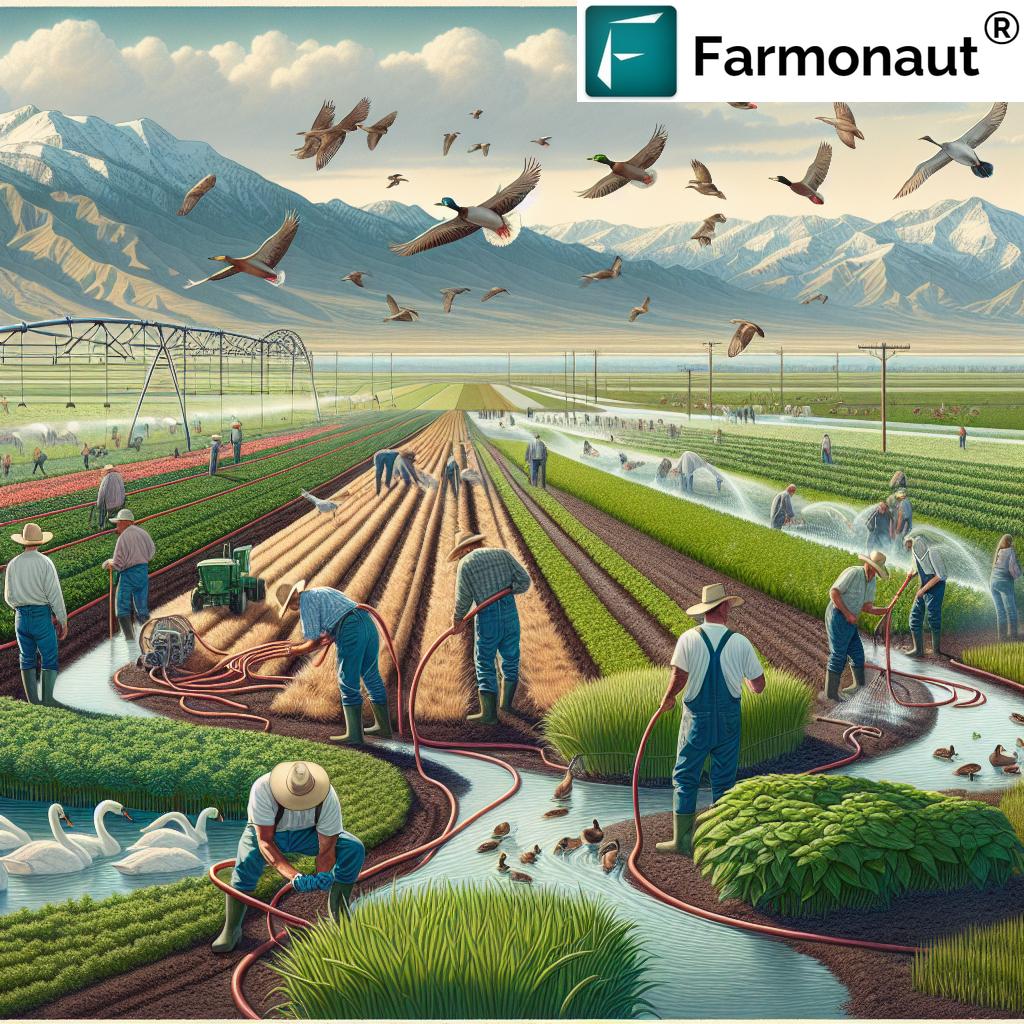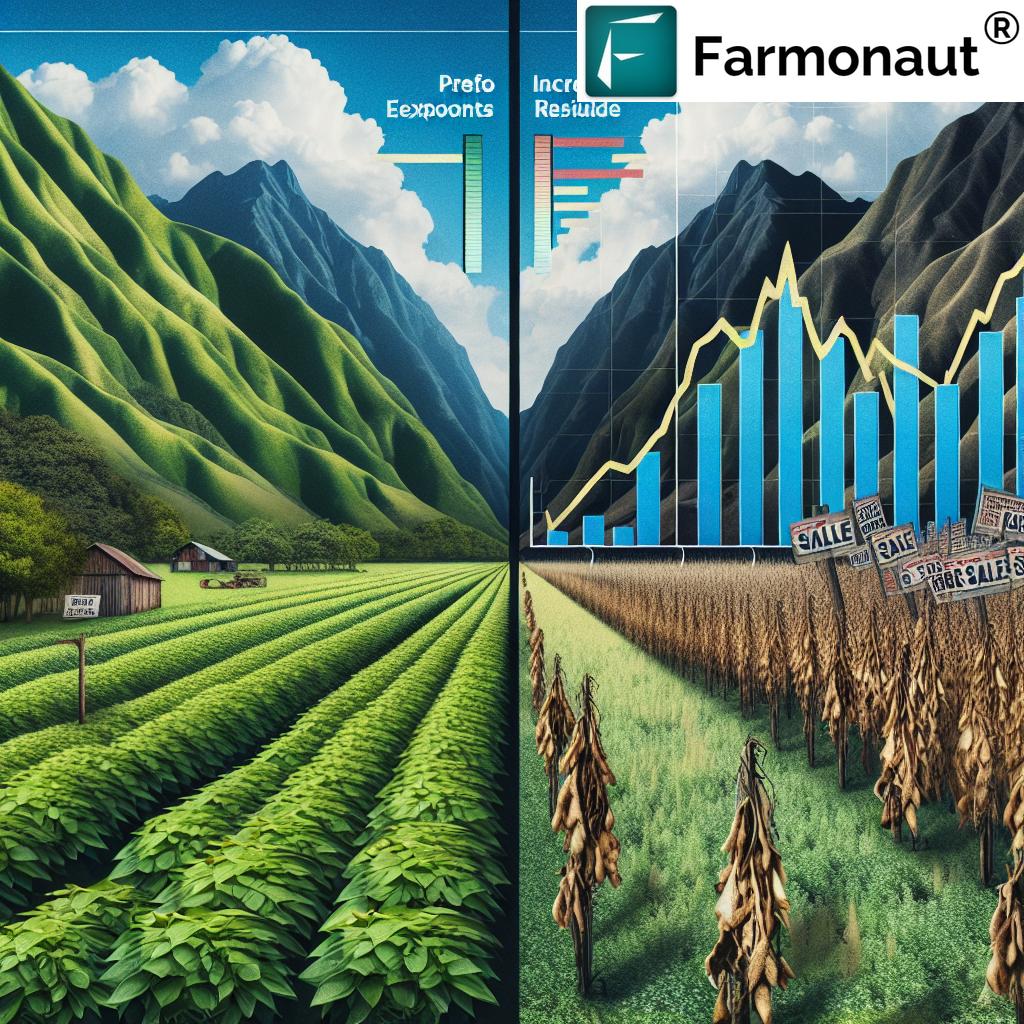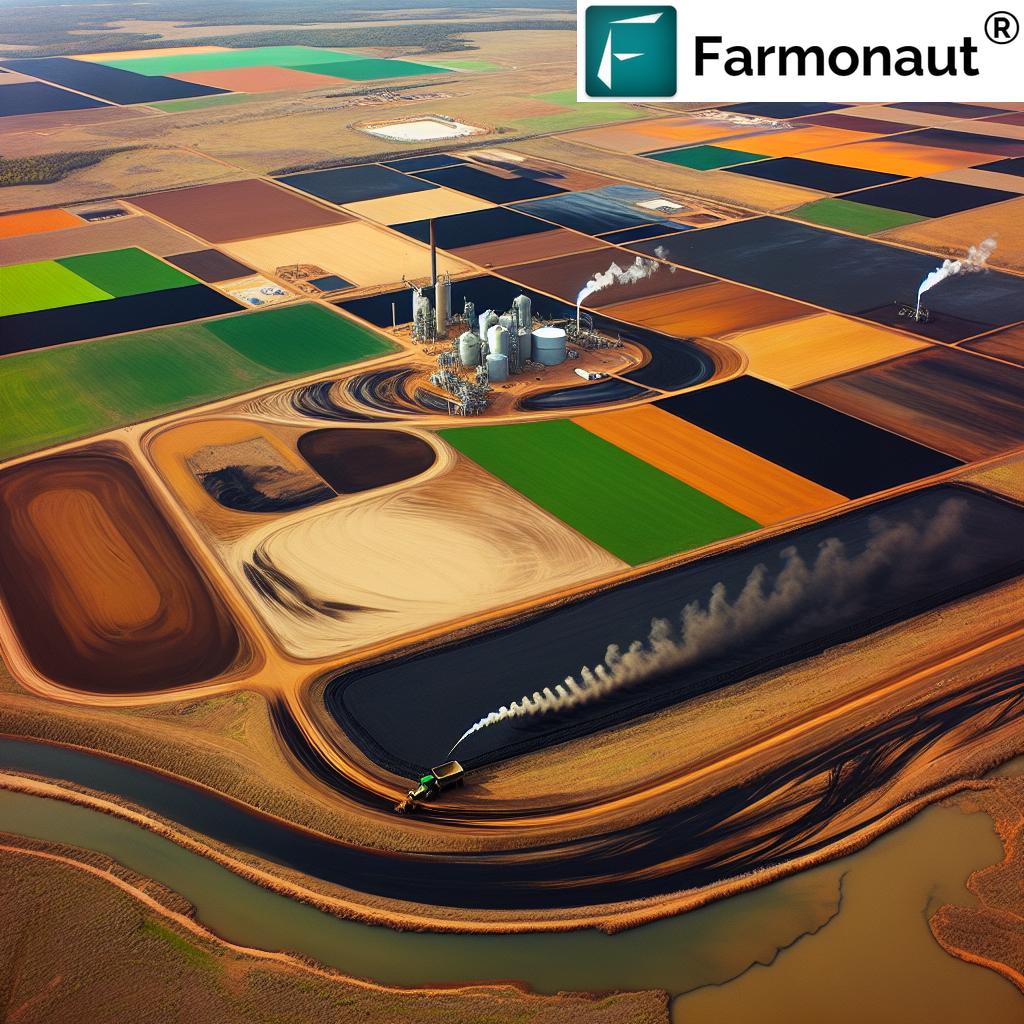Utah Agriculture Conservation for Great Salt Lake Tips: How Sustainable Farming Can Save an Iconic Lake
Table of Contents
- Trivia: Water Use & Efficiency
- Introduction: Why Utah’s Agriculture and the Great Salt Lake Matter
- The Great Salt Lake: An Ecological and Economic Asset
- Impact of Agricultural Water Use on Great Salt Lake Water Levels
- Utah Water Conservation Strategies and Initiatives
- Innovative Agricultural Water Conservation Strategies in Utah
- Comparative Conservation Strategies and Water Savings Table
- Farmonaut: Precision Water Management with Satellite Technology
- Habitat Loss, Decline, and the Path Forward
- Frequently Asked Questions (FAQ)
- Subscribe to Farmonaut’s Solutions
“Utah agriculture uses about 80% of the state’s water, directly impacting Great Salt Lake’s water levels.”
Introduction: Why Utah’s Agriculture and the Great Salt Lake Matter
As Utahns, we are deeply connected to both our vibrant agricultural traditions and the breathtaking natural beauty of the Great Salt Lake. However, these two pillars of our identity have become inextricably linked in a struggle for sustainable coexistence. Agricultural water use is a major consumer of our region’s precious surface water—with over 45% of annual flows from rivers supplying the lake being diverted for farming, municipal, and industrial purposes. The impact of water diversion on lakes is nowhere more visible than here.
The decline of the Great Salt Lake water levels due to agricultural and other diversions has put our prized habitat, migratory birds, economic interests, and communities at risk. In this blog, we explore how sustainable practices, innovative conservation, legislative efforts, and the power of modern data-driven technologies like Farmonaut can lead to a healthy future for both our farmlands and this globally significant ecosystem.
The Great Salt Lake: Utah’s Ecological and Economic Asset
The Great Salt Lake is both an extraordinary ecological and economic asset for Utah. It stands as the largest salt water lake in the Western Hemisphere, hosting unique habitats that support hundreds of species of wildlife. It is a critical habitat for millions of migratory birds, including the endangered snowy plover. Beyond its natural beauty, it contributes about $1.3 billion annually to the state’s economy through:
- Mineral extraction (salt and other minerals harvested from lake water)
- Recreation (including boating, hunting, and birdwatching tourism)
- Brine shrimp harvesting (a multi-million dollar export industry)
This global ecosystem also maintains vital upstream habitats and provides crucial environmental services such as dust suppression from exposed lake beds.
Impact of Agricultural Water Use on Great Salt Lake Water Levels
Agriculture shapes Utah’s landscapes and sustains our communities, but it also serves as the largest consumer of fresh water in the state. Nearly 80% of Utah’s water is allocated to farming, mostly for irrigation—with the majority sourced from diverted surface flows from rivers feeding the Great Salt Lake.
Key data from recent research suggests that water diversions—including surface water redirected for farming, municipal, and industrial uses—have caused a loss of approximately 11 feet in lake elevation and over a 50% reduction in the lake’s area within the past 150 years.
- Elevated water use in agriculture impacts both lake volume and ecosystem health, leading to habitat loss, increased dust from exposed lake beds, and concentrated salinity which threatens aquatic life and migratory bird populations.
- The impact of water diversion on lakes is near its breaking point for the Great Salt Lake, with surface flows from the Bear, Weber, and Jordan rivers being crucial to refill and sustain the lake.
- As the lake declines, so too does its ability to support Utah’s economy, recreation, and wildlife.
Habitat Loss and Migratory Birds
The reduction in water has devastated critical habitats for migratory birds. As the lake shrinks, nesting areas for species like the fall-migrating western sandpiper and snowy plover disappear. This migratory birds habitat loss not only threatens bird populations but upsets international flyway networks.
“Improving irrigation efficiency by 10% could save over 100,000 acre-feet of water annually for the Great Salt Lake.”
Utah Water Conservation Strategies and Legislative Actions
Recognizing the economic impact of lake decline and the urgent environmental risks, Utah has stepped up conservation initiatives and legislative measures over recent years to safeguard Great Salt Lake water levels and its critical habitats.
Key Legislative Actions for Water Conservation
- Utah Legislature allocated $40M (2022): This funding was allocated to directly increase inflows into the Great Salt Lake, as well as to enhance upstream habitats.
- House Bill 429: This legislative measure mandates Utah’s Division of Water Resources to gather data and study watersheds feeding the Great Salt Lake, aiming to inform and guide future conservation actions.
- Agricultural Water Optimization Fund: The Great Salt Lake Watershed Agricultural Water Use Optimization Strategic Fund Pool is dedicated to funding projects that promote higher irrigation efficiency in agriculture and support the community in adopting more sustainable practices.
- Financial incentives: The proposal to compensate farmers for diverting water to the lake encourages voluntary water conservation by recognizing and financially supporting the ecosystem value of returned flows.
Programs Supporting Conservation
- Demonstration Gardens & Water-Wise Landscaping Initiatives: Programs like Conservation Garden Park in West Jordan promote education about water-wise landscaping which, scaled across communities, enhances urban water conservation.
- Watershed Research and Data-Driven Approaches: By investing in research and data gathering from the five watersheds that feed the Great Salt Lake, the state is better equipped to optimize future water management and respond to environmental challenges.
- Collaboration between agencies, farmers, and the community: Utah’s strategy depends on the united efforts of all stakeholders to ensure that conservation measures are practical and effective on the ground.
Innovative Agricultural Water Conservation Strategies in Utah Near the Great Salt Lake
To ensure the long-term health of the Great Salt Lake, we must go beyond policy and take practical steps to enhance efficiency and implement sustainable agriculture practices Utah is uniquely positioned to lead. Here are some of the proven and emerging strategies being used by Utah farmers and conservationists:
1. Drip and Precision Irrigation
- Drip irrigation delivers water directly to plant roots, minimizing evaporation and runoff. This method improves efficiency by 30-50% over flood irrigation and reduces overall water use.
- Many Utah farms are retrofitting systems to include advanced smart irrigation controllers for maximum savings.
2. Solar-Powered Irrigation
- Installing solar panels above crops not only powers pumps but also reduces water loss by providing shade, cooling crops and soil.
- This dual-purpose approach is gaining popularity for its ability to enhance on-farm economics and water efficiency.
3. Smart Irrigation Technologies
- Utilizing smartphone-controlled pivots and sensors helps precisely monitor and optimize water applications, reducing water use by 20% to 40% over conventional sprinkler systems.
4. Soil Moisture Monitoring
- Installing sensors at root zone level provides real-time feedback on soil moisture, allowing farmers to irrigate only when necessary—significantly lowering water waste.
5. Advanced Scheduling and Timing
- Irrigation scheduling platforms, often powered by satellite data and weather tracking, help time applications to optimal periods (evening or early morning) to further reduce evaporation losses and improve crop health.
6. Rotational Grazing
- Rotational grazing on pasture lands aids soil health and water infiltration, lowering overall water requirements and contributing to carbon sequestration.
7. Cover Cropping & Conservation Tillage
- Cover crops protect and enrich the soil, reducing evaporation and improving soil moisture retention during dry months. Conservation tillage maintains soil structure, further locking in moisture for longer periods.
8. Water-Wise Urban Landscaping
- Communities are encouraged to replace thirsty lawns with native plants and drought-tolerant landscaping. This reduces municipal water use and the pressure on surface flows that feed the Great Salt Lake.
9. Agricultural Water Optimization Programs
- Utah’s optimization initiatives provide financial support to growers to adopt water-saving technologies, including grants for equipment upgrades and on-farm efficiency improvements.
10. Financial Incentives for Reduced Water Use
- Technically, the current proposals to pay farmers who deliver saved water to the lake help create a sustainable water marketplace, compensating environmental stewardship and supporting the future viability of farming near the Great Salt Lake.
Comparative Conservation Strategies and Water Savings Table
To guide farmers, policymakers, and community leaders, we have created a comparative overview of key conservation strategies. This table illustrates each approach’s water savings potential, implementation complexity, estimated costs, and likely yield effects—empowering informed, efficient Utah agriculture conservation choices.
| Conservation Strategy | Estimated Water Savings (%) | Implementation Complexity | Potential Impact on Crop Yield | Estimated Cost Range ($/acre) |
|---|---|---|---|---|
| Drip Irrigation | 30–50% | Moderate | Yields maintained or improved | $500 – $1,600 |
| Laser Leveling | 15–25% | Complex | Yield improvement likely | $120 – $300 |
| Rotational Grazing | 10–25% | Simple | Often improves pasture Health | $15 – $50 |
| Cover Cropping | 8–15% | Simple | Possible yield boost, better soil | $20 – $70 |
| Soil Moisture Monitoring | 10–20% | Moderate | Often increases | $200 – $500 |
Values are estimates; actual figures may vary according to crop, climate, and scale of implementation.
Farmonaut: Precision Water Management with Satellite Technology
Managing water resources for conservation, optimization, and sustainability requires actionable, real-time data — which is precisely what modern tools like Farmonaut offer. By leveraging satellite imagery, AI, and weather analytics, we can radically improve irrigation efficiency, crop health monitoring, and resource allocation.
Key Features of Farmonaut for Utah Agriculture Conservation:
- Satellite-Based Crop Health Monitoring: Farmonaut’s real-time multispectral data shows variations in vegetation health (NDVI) and soil moisture. Farmers can inform their irrigation schedules by identifying crop stress and optimizing water use field-by-field, minimizing resource loss and runoff.
- AI-Powered Advisory (Jeevn AI): The system provides personalized recommendations for pest management, irrigation, and fertilizer, contexualized for local weather and crop conditions—for yield enhancement and resource efficiency.
- Carbon Footprinting: Farmonaut’s carbon footprinting tools help track and reduce emissions on a per-field basis, supporting both environmental compliance and farm marketability for sustainable rainfall and irrigation practices.
- Blockchain-Based Traceability: Traceability solutions enable transparency and trust throughout the agrifood supply chain, which is especially relevant where sustainable water and land management is important to high-value buyers.
- API Access: Developers and agri-businesses can tap directly into Farmonaut’s satellite and weather datasets via the Farmonaut Agriculture API and accompanying API Documentation for integration into custom dashboards, apps, or research tools.
- Fleet & Resource Management: Using Farmonaut’s fleet management suite, farmers and agribusinesses near the Great Salt Lake can optimize machinery use, cut down on water- and fuel-wasting trips, and manage assets more sustainably.
- Crop Loan & Insurance Verification: For local producers, Farmonaut’s satellite-based crop loan and insurance verification improves access to financial tools and risk management while ensuring verified compliance with sustainability requirements.
All of these services are available via Farmonaut’s browser app, iOS, and Android apps for Utah farmers and conservation professionals. With real-time, field-level intelligence, we can take collective action for better water conservation outcomes and support long-term lake and community resilience.
Who Benefits from Farmonaut in the Great Salt Lake Region?
- Individual Farmers: Easily accessible guidance for water optimization and real-time monitoring for Utah’s agricultural water use.
- Large Agribusinesses: Large-scale oversight and management of multiple farm parcels and landscapes, improving irrigation efficiency while optimizing resource logistics and reporting.
- Government & Conservation Professionals: Regional-scale datasets and benchmarking for evaluation of conservation initiatives Utah and watershed management programs.
- Financial Institutions via satellite-based loan verification and insurance risk reduction, ensuring the integrity of sustainable agriculture practices Utah.
- Researchers & Developers: Access to granular satellite data and analytics for environmental research.
This digital-first approach complements boots-on-the-ground conservation efforts across our state.
Ready to Access Farmonaut’s Precision Tools for Utah Agriculture?
Access real-time data, boost water savings, and enhance your conservation impact on the Great Salt Lake watershed! Choose from affordable, scalable subscription options below:
Habitat Loss, Decline, and the Path Forward for Great Salt Lake
Despite positive efforts and energized initiatives, Utah faces ongoing challenges:
- Record lows: In 2022, the Great Salt Lake water level reached its all-time minimum, exposing thousands of acres of lake bed to wind erosion and environmental hazards.
- Increased salinity: Less inflow raises salt concentrations, threatening the brine shrimp industry and disrupting food chains for birds.
- Loss of habitat: Decline of lake waters continues to reduce nesting and feeding grounds for migratory birds, accelerating local and global habitat loss.
- Air quality and dust storms: Fine sediments from exposed lake beds threaten human and animal health.
The solution? Ongoing research, data-driven collaboration, and a commitment among farmers, agencies, and the wider community to sustain both our agricultural economy and ecological treasures through proven and emerging conservation strategies.
🌱 Recent Developments in Great Salt Lake Conservation Efforts
FAQ: Utah Agriculture Conservation for Great Salt Lake
Q1. How does agricultural water use affect the Great Salt Lake’s water levels?
A significant portion of Utah’s agriculture relies on water diverted from the rivers that feed the lake. Up to 80% of Utah’s water is used for irrigation, which directly reduces the surface flows that reach the Great Salt Lake, lowering its water levels and shrinking its area.
Q2. What are some practical Utah water conservation strategies for farmers?
Key approaches include implementing drip irrigation, using soil moisture sensors, optimizing irrigation scheduling, practicing rotational grazing, planting cover crops, and leveraging data-driven farm management tools like Farmonaut for real-time crop monitoring and water use optimization.
Q3. How do legislative and financial incentives help farmers reduce water use?
Utah has allocated funds and passed laws that support efficiency upgrades, research, and even proposals for direct payments to farmers who return saved water to the lake. These initiatives make it more feasible and financially sustainable for farmers to adopt conservation measures.
Q4. Are these conservation strategies expensive to implement?
Costs can vary widely by method and scale, as seen in our comparative table above. While technologies like drip irrigation require upfront investment, the long-term water and savings often offset costs, and financial support is increasingly available through state and federal programs.
Q5. How can Farmonaut help Utah farmers and conservationists?
Farmonaut’s satellite-powered platform gives real-time insights on crop health, soil conditions, irrigation needs, and more, enabling optimized water management, sustainable practices, and compliance with conservation guidelines, accessible via web, Android, and iOS devices.
Conclusion: Utah’s Future Depends on Informed Conservation
The battle to save the Great Salt Lake is not just about protecting a body of water. It’s about securing Utah’s agricultural economy, preventing habitat loss for world-renowned bird populations, supporting recreation and industry, and preserving a key piece of our state’s identity. With data-driven water management, agricultural optimization, and united community efforts guided by robust technologies like Farmonaut, we can rebalance lake inflows and sustain both farms and wildlife for generations to come.
Let’s work together to implement these Utah agriculture conservation for Great Salt Lake tips—for a resilient, sustainable, and thriving future!


